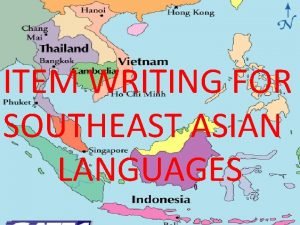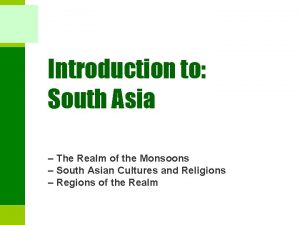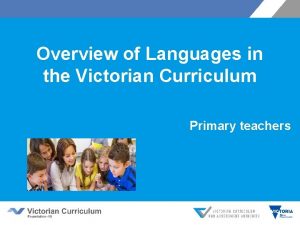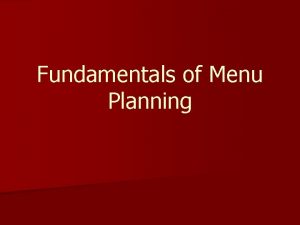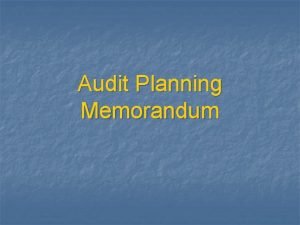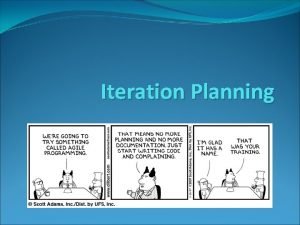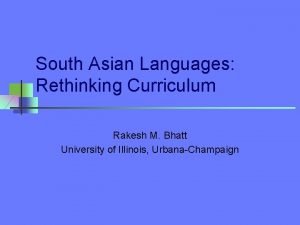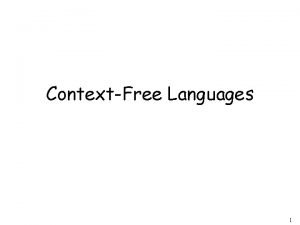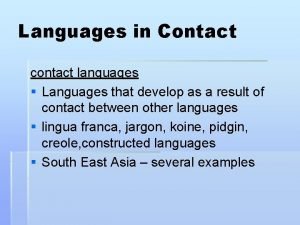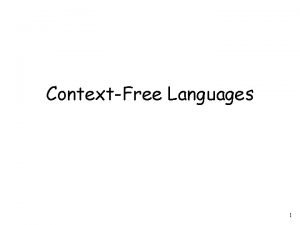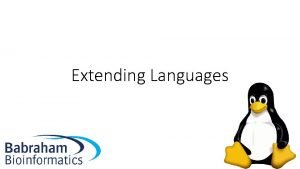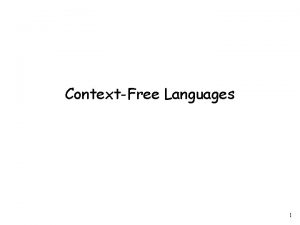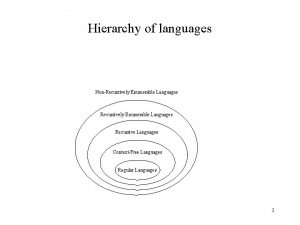Curriculum Planning South Asian Languages Curriculum n Purpose















- Slides: 15

Curriculum Planning South Asian Languages

Curriculum n Purpose n Guide the processes of teaching/learning n n Focus n Interaction n n Based on knowledge of the learning process/context Understanding the learner/learning context Realization n Syllabus design n n Flexible specifications Provision of means for instructional action

Foundational Principles: AAA n Awareness n Autonomy n Authenticity

Awareness n Relating learning to existing knowledge and experience n n The stone-age man from New Guinea Noticing/consciousness raising n n n Focused attention Role of perception Reflection

Autonomy Chomsky (1988: 181): The truth of the matter is that about 99 percent of teaching is making the students feel interested in the material. Then the other 1 percent has to do with your method.

Autonomy—Basic Principles n Motivation n n Intrinsic (innate) Extrinsic (environmental) n Choice, Affect, Effort n n Attention-paying << high/sustained cognitive effort << positive affect (for activity, materials) << feeling of control, ownership, competence Responsibility n Decision making

Authenticity n Texts n Language use in life n n Newspaper articles, novels, poems, commercials, soap opera episodes Relevance

Another A? : Achievement n Intraindividual/Interindividual n n n Improvement Accomplishment How are the intra and the inter related? n Relational implication for: n n Self-esteem Assessment Feedback Rewards

Learner Needs n Who is the second language learner? n n What does s/he bring to class? What are her/his goals?

Needs Analysis n Topic n n small group discussion Formal language study 12345 Skills n n n 12345 Method n n study pop culture current affairs speaking Writing 12345 Assessment n teacher assess my work 12345

Learner types and learning preferences n Concrete learners n n Analytical learners n n grammar, read newspapers, study alone Communicative learners n n games, videos, talking in pairs watching, listening, using L 2 outside Authority-oriented learners n teacher explanation, textbook

Summing up: CLT n n n Language learning is learning (struggling) to communicate Meaning is paramount Fluency and acceptable language is the primary goal: judge accuracy in context Sequencing is determined by any consideration of content function Linguistic variation is a central concept in materials and method

Do the results stack up? n n Learners produce greater quantity and variety of language in group work versus teacher-fronted activities. In group work, NNS-NNS interaction produce more talk. Learners who have opportunities to negotiate meaning (make clarification requests and check comprehension) do better at comprehension than those learners receiving simplified input. Communication-based + grammar-focus instruction works better than grammar-only OR communicationonly instruction.

What do WE need to do? n n n n Provide appropriate input Use language in authentic ways Provide context Design/use task-based activities Encourage collaboration Address grammar consciously Adjust feedback to the situation Include cultural aspects of language use

Conclusions n n Focus on DISCOVERING culture Language is the instrument/tool/medium of that DISCOVERY Learner is ACTIVE Teacher’s role: Keeping learner ACTIVE
 Asian languages written
Asian languages written South asian realm
South asian realm South east asian ministers of education organization
South east asian ministers of education organization South asia physical map
South asia physical map Asia seasonal forecast
Asia seasonal forecast 11 official languages of south africa
11 official languages of south africa South american languages
South american languages Googliser
Googliser Old south vs new south streetcar named desire
Old south vs new south streetcar named desire Complex sentence purpose
Complex sentence purpose General purpose specific purpose central idea
General purpose specific purpose central idea What are the objective of family planning
What are the objective of family planning Foundations of menu planning
Foundations of menu planning Contents of audit memorandum
Contents of audit memorandum Purpose of project planning
Purpose of project planning What is meant by an iteration goal
What is meant by an iteration goal
